
(Grumpy) Cat 4 President: LOLcats in the US Presidential Elections
While some people might say that cat memes are passé, platforms such as 9GAG, YouTube and icanhascheezburger.com show the opposite: cat content and especially LOLcats, the phenomenon of cat images combined with a short text, are still being uploaded daily and can be found all over the internet.
The famous cat memes are also inevitably created for huge public events such as the US presidential election campaigns. This article aims to find out how these LOLcats, which are often seen as mere entertainment, can be used to contribute to public discourse on a political theme.
Oh Hai There, introducing LOLcats
Cats have been taking over the internet (Kingson, 2015) and so-called LOLcats have appeared on popular online platforms for years now. These LOLcats are created to simply put the viewer in a good mood, to be used for advertisements (catvertisements), or to appear in news articles.
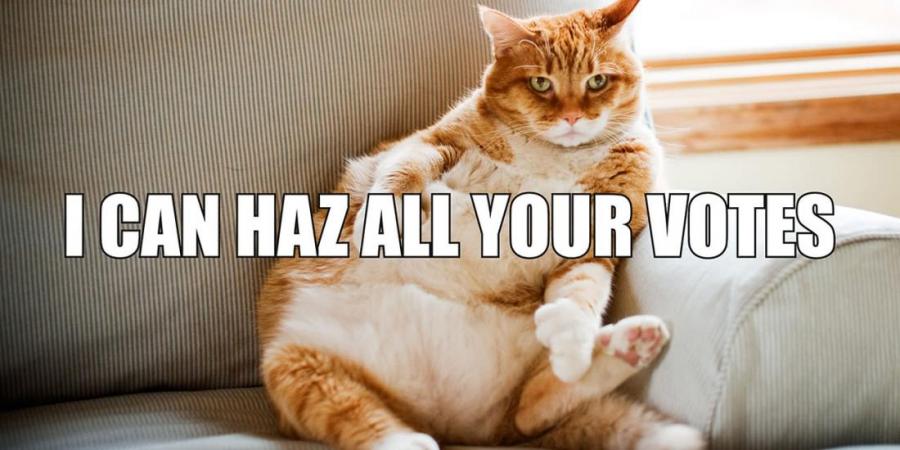
LOLcats can influence the viewers’ behaviour in a positive way (Podhovnik, 2016: 130). According to Jason Eppink, curator of the exhibition ‘How Cats took over the Internet’ at the New York Museum of Moving Image (2015-2016), the enormous popularity of cats has several reasons behind it, such as the bored at work network and the global appeal of pictures with no need for language (Podhovnik, 2016: 131). Eppink explains that ‘the possibilities of the internet and new technology support developments enabling people all over the world to post and consume cat pictures and videos with enjoyment and without shame in a community’ (Podhovnik, 2016: 131).
Aspects such as visibility and recognisability add to the popularity of online cat content. These same aspects go for internet memes, which are in this essay defined as multimodal signs in which images and texts are combined (Varis & Blommaert, 2015: 8). Due to its visibility, recognisability and multimodality, together with the fact that it is easy to create, a meme is able to shape and spread a socially constructed public discourse (Shifman, 2014: 4).
It is inevitable that political events such as the US presidential elections would spark a huge number of memes.
This discourse can also be about political themes. In her book, Memes in Digital Culture (2014), Limor Shifman argues that we live in an era of hypermemetic logic, which means that every major public event sprouts a stream of memes (Shifman, 2014: 4). It is thus inevitable that political events such as the 2016 US presidential elections would spark a huge number of memes as well.
Below, different examples of LOLcats that represent different perspectives on this political event will be examined. We will see a shift from LOLcats being used for mere entertainment, to LOLcats being used by the audience to express their political views, to LOLcats being used as a persuasive tactic to influence the viewers’ ideology.
Memes become a new form of knowledge and thus a way for the audience to gather information regarding the presidential elections. This article therefore aims to show how the popular LOLcat can play an integral part in these elections.
The LOLcat community
The most well-known memes are the memes that have gone viral. But for a meme to shape, spread and reflect on general social mind-sets, it is not necessary for it to be enormously popular. Instead, Shifman refers to memes as socially constructed public discourses by which different voices and perspectives can be represented (Shifman, 2014: 9). The internet is a meeting place where different memes, which are basically venues for expressing opinions, can be displayed (Shifman, 2014: 149-150).
When a meme such as the LOLcat circulates on the internet, a new (online) community can be built around the exchange and creation of these memes. An example of this is the LOLcat community. But to be part of this community one needs to have certain knowledge in order to understand the meaning of the memes. This is because a meme is, just as all visual communication according to Kress and van Leeuwen, always coded (Milner, 2016: 50). To know the meaning of a meme, the audience needs to be aware of the cultural and political context in which it is created. With that, the audience needs to understand that the meme is based on reappropriation, whereby bricolage and poaching are used to take elements from different contexts and to weave them into a new expression (Milner, 2016: 64).
For a meme to shape, spread and reflect on general social mind-sets, it is not necessary for it to go viral.
When this is the case, a community of shared knowledge emerges. According to Shifman, this can also be seen as a sense of networked individualism, since the personalized memes are part of a bigger community (Shifman, 2014: 129). The LOLcat community is an example of this, wherefore even an additional language is created: Lolspeak.
Lolspeak
The humour of LOLcats lies in the portrayal of cats in combination with the captions (Podhovnik, 2016: 132). These captions are mostly written in a language produced especially for the LOLcats, namely the so-called Lolspeak.
In Lolspeak, ‘languaging’ is performed through fixed expressions and speech characteristics. It has a childlike tone and incorrect grammar, and through it the user can imagine the cat’s voice in the picture (Podhovnik, 2016: 132). As we can see in Figure 1, the word 'political' is for example changed into ‘pawlitical’.
The meme itself is from icanhas.cheezburger.com, which is interesting because ‘I can has Cheezburger?’ is the original meme on which this particular pidginized variety of written English is based (Varis & Blommaert, 2015: 11). The website is full of memes and especially LOLcats, producing top cat memes of the week and a range of up-votings.
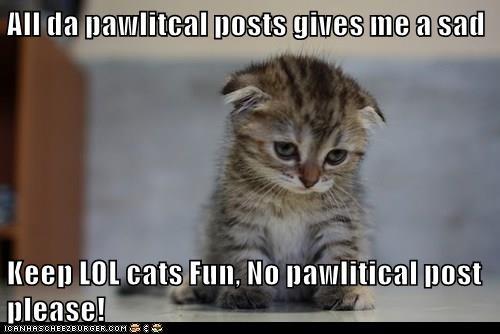
Figure 1: LOLcat meme with Lolspeak.
In Figure 1, the language in the meme is used together with the image of a sad kitten to show a perspective whereby the creator wishes to see LOLcats merely for the LOL instead of for political purposes. It shows 1) that cat memes are often used to speak of politics and that this shows up a lot on this creator's feed, otherwise he or she would not have created this particular meme and 2) that even though LOLcat memes are used often for social themes, there are people who like to see cat content for its initial purpose: as mere entertainment.
Due to the choice of the creator of the meme to use Lolspeak, it can be seen as an inside joke in the LOLcat community (Podhovnik, 2016: 132). The necessity of the insider knowledge thus shows that these memes can generate a community around these LOLcats (Shafer, 2012: 3): a community of shared knowledge.
Let’s talk Pawlitics: civic participation
While Figure 1 shows us a statement by someone who thinks that LOLcats are merely for fun, Shifman (2014) shows that memes can go beyond silliness and can offer a new way of civic participation, where citizens are able to express political opinions and participate in important debates (Lecheler, 2014: 2).
In that sense, memes can form a kind of distribution channel, which serves as a purveyor of political sentiments, values and debates (Burroughs, 2013: 259). As the audience can play an active role in re-mixing, re-articulating and digesting popular culture (Burroughs, 2013: 250), LOLcats regarding the 2016 US Presidential Campaigns can be a way for the audience to play a part in the elections.
An example of someone having created a LOLcat to participate in the debate on these 2016 Presidential Elections can be seen in Figure 2. Here we see a picture of the famous Grumpy Cat, with the text ‘I’m so happy Trump for president’. The combination of the picture of the grumpy cat and the text, for which borrowing and mixing from other sources, or bricolage and poaching, is used, make it a sarcastic meme, stating that this creator is actually really not happy with Trump being a candidate for the presidential elections.
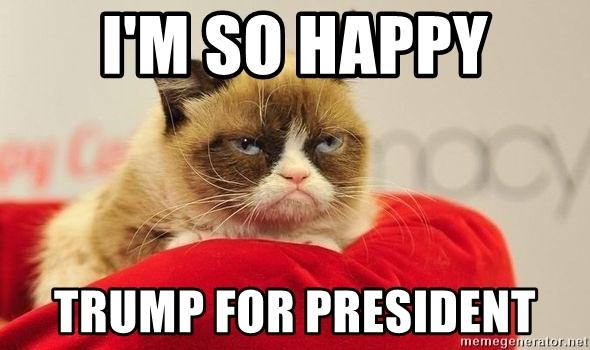
Figure 2: LOLcat ‘I am so happy Trump for President’.
The combination of the image and text make the meme serious and humorous at the same time. The fact that it is created on memegenerator.net (as can be seen in the right bottom corner of the meme) shows that it is an easy-to-make meme that does not require any special technical skills or expertise to be created.
And yet, with the picture popping up when searching online for memes on the presidential elections, the meme is easily visible for others and has a high recognisability due to its mixing of familiar elements.
With Grumpy Cat, the meme makes use of a famous phenomenon. Grumpy Cat first appeared online in a post by its owner’s brother on Reddit in 2012. Within 24 hours, pictures of the grumpy cat were already used for parodies and the cat became famous all over the internet. Many years later, the pictures of the cat are still used, including parodies of the US presidential campaigns.
Grumpy Cat 4 President
While Figure 2 presents a picture of Grumpy Cat to make a certain statement about a candidate in the 2016 US Presidential Elections, others have taken it a step further to promote Grumpy Cat as a candidate himself. While there are even T-shirts made to promote him for President, it is obvious that silliness and humour play a huge role in these memes.
However, at the same time they can also be used to show one's dislike of the actual candidates by opting for Grumpy Cat because even he would be a better President than the candidates running. This is shown in Figure 3.
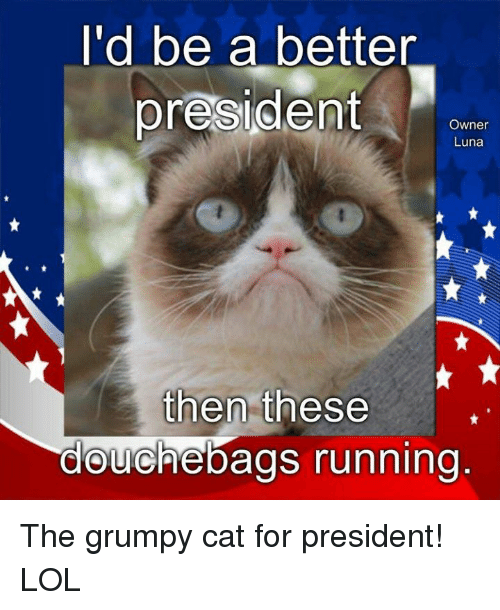
Figure 3: Meme promoting Grumpy Cat for President.
Here, it is interesting to see how the role of the cat has changed. While in Figure 1 the kitten simply has the role of a cute, innocent animal, the Grumpy Cat suddenly has a more active role in Figure 2 and 3. Here, the cat is given a certain opinion towards an important theme. The changing role of the cat is therefore an important aspect of the generated meaning of the meme.
Let’s talk Pawlitics: LOLcats as a persuasive tactic
In the examples above I have shown how a LOLcat can generate a certain meaning and how this can radically differ per meme in terms of the type of intertextual links and reappropriation used, and the role of the cat in the meme. The examples also show how through memes, people can participate in the political debate and express their political opinions.
Starting with the US Presidential Elections of 2008, memes were already used to influence the political campaigns (Shifman, 2014). While memes can be used in the audiences’ participation, they can be used by the election campaigns themselves as well. Shifman (2014) thus states that while memes can be silly and serious at the same time, it is important to be conscious about who has created them.
The above examples for instance are most probably all amateurish images (based on the fact that you can see their origin stated in the corner of the image), but they can also be produced by more professional established organizations from the political elite (Lecheler, 2014: 2). This is what happened for example in 2015 in Australia, when the New South Wales branch of the Labor Party decided to use LOLcats and especially Grumpy Cat for their social media campaign (The Queensland Times, 2015).
Memes can become a way to gain information regarding politics and elections.
This is important because memes can be shared and spread as a form of knowledge regarding a specific issue. They are very shareable due to their intertwining of fun and facts. When memes are used to spread a certain political meaning, they can influence the socially constructed public discourses, whereby the memes become a persuasive tactic within an election campaign.
Memes can play such an important role because, as Shifman (2014) explains, in election campaigns the understanding of information is influenced by one's peers, such as friends and family, rather than by information coming directly from political elites (Lecheler, 2014, 2).
Elihu Katz and Paul Lazarsfeld also showed that people listen more easily to what the people around them say, than what mass-media messages tell them (Shifman, 2014: 124). Memes thus become a way to gain information regarding politics and/or elections.
Also, when a meme originates from the political elite itself and is seen as valuable, the perspective of the political elite becomes intertwined with the civic participation and knowledge. The possibility for the political elite thus arises to influence the socially constructed public discourses. This may even influence civic participation in political debates through memes, since a meme by a citizen will eventually compete for attention with the meme created by the political elite.
This connects with the idea of algorithms and filter bubbles influencing what you see online. Algorithms play an increasingly important role in selecting what information is considered most relevant to us, which is a crucial feature of our participation in public life (Gillespie, 2016: 167). They thus provide a means to know what there is to know and how to know it, to participate in social and political discourse and to familiarize ourselves with the public in which we participate (Gillespie, 2016: 167).
These algorithms can lead us into filter bubbles, where we only find the news we expect and the political perspectives we already hold dear (Gillespie, 2016: 188). Such a filter bubble can for instance prevent you from seeing a LOLcat meme such as the one in Figure 2 or Figure 3, if you are definitely voting for Trump.
A filter bubble can prevent you from seeing a LOLcat meme.
The introduction of algorithms and filter bubbles into human knowledge practices may have political ramifications, and a political meme can only add to that. Here, a LOLcat such as the one in Figure 2 showing up on your feed (because of the filter bubble) can only confirm your mindset when you are already against Trump as president. With the knowledge and views that you already had, the LOLcat can then be read as a fact that adds to confirm what you already knew.
Cute Cat Theory
The fact that LOLcats are no longer merely used for entertainment is something that Ethan Zuckerman already explained with his Cute Cat Theory in 2008. In this theory, he addresses how the Web 2.0 initially was created for mundane purposes such as for people to share and spread images of cute cats, for which they indeed often use social media. But while these platforms were developed to share cute images, they are at the same time very useful for digital activists.
Platforms such as Facebook and Twitter can more easily be used to spread certain ideas and thoughts with fewer risks of the government taking these huge platforms down since they are created and used mostly for entertainment and are also hugely popular (Zuckerman, 2008). The same platform where a lot of LOLcat images and cat content is shared is thus often used by online activists, Zuckerman points out.
This shows that LOLcats can also be used for a fourth purpose: to facilitate (political) statements by digital activists.
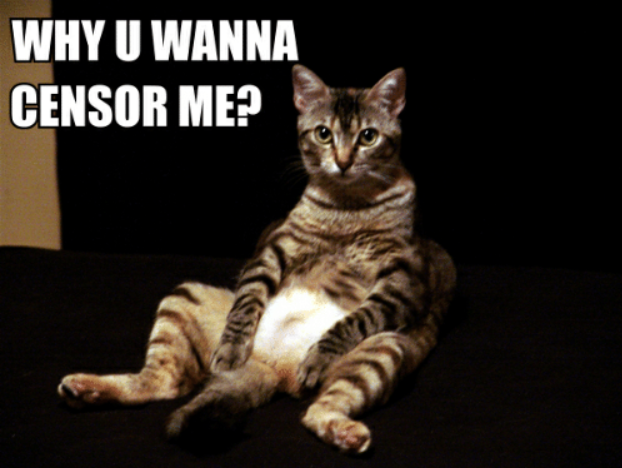
Figure 4. LOLcat ‘’Why u wanna censor me?’.
Memes as political discourse
This article aims to shed light on the use of LOLcats for the US presidential elections. Memes, based on reappropriation, are multimodal and easy to make, and can create a way for citizens to participate in the political debate. This is because a meme and therefore also the LOLcat can help share and spread a particular social mindset.
The LOLcat is then not merely entertainment anymore. Instead, the LOLcat is used for more social and political themes, such as the US Presidential Elections. Figure 2 and 3 above, for example, focus on the 2016 Elections and represent different voices from the audience.
Memes can thus be used by the audience to participate in a debate but also by an elite to consciously try to influence public discourse.
While in today’s society memes can become a way for gathering information and the meme is thus often seen as a form of reliable knowledge, it is important to consider where the meme originates from. Shifman (2014) points out that the fact that memes can be easily created, does not mean that more professional creators do not use them. Instead, memes can also be used for instance by the political elite as a persuasive tactic in the context of elections. Memes can thus be used by the audience to participate in a debate but also by an elite to consciously try to influence public discourse.
This article focuses on cat content, but the internet is not merely full of LOLcats as after their creation, the text format has been extensively borrowed whilst altering the background images. This has led to new immensely popular memes such as the Philosoraptor or the Socially Awkward Penguin, together with many others. With easy tools that can be accessed online, everybody can create a similar meme, borrowing the format but using other images and/or text. A specific meme does not therefore have to go viral to be a success: when it is recognisable and visible for others it can already help shape and spread a certain mindset.
While this article merely disucssed the use of LOLcats for expressing political views, a broader paper could elaborate on how this might affect the results of political elections. With fake news, filter bubbles and algorithms influencing which content you do or do not get to see, it is important to shed light on the consequences of the changing (digital) culture and the creation of both communal and individual identities online. A further deconstruction of memes and online trends can provide new information on this topic and create consciousness amongst the audience.
In the meantime, it is important that the audience becomes more aware of how memes, like the LOLcats, are no longer merely for the ‘lulz’, but also for pawlitical purrrposes.
References
Burroughs, B (2013): ‘Obama Trolling: Memes, Salutes and an Agonistic Politics in the 2012 Presidential Election’, in: The Fibreculture Journal 22, 258-273.
‘Election social media campaign hits right cat-egory’ (March 9, 2015), The Queensland Times. Last retrieved on 21 Dec. 2018.
Gillespie, T. (2014): ‘The Relevance of Algorithms’, in: Gillespie, T, Boczkowski, P.J. & Foot, K.A. (eds.): Media Technologies: Essays on communication, materiality and society. MIT Scholarship Online, 167-193.
Kingson, J.A. (August 6, 2015): ‘How Cats Took Over the Internet’ at the Museum of Moving Image’, NY Times. Last retrieved on 9 Dec. 2018.
Lecheler, S (January 18, 2014): ‘Book Review: Memes in Digital Culture by Limor Shifman’. Last retrieved on 9 Dec. 2018.
Milner, R.M. (2016): ‘Chapter 2 Grammar: Structures for making statements and making do’, in: Milner, R.M. The world made meme. Public conversations and participatory media. Cambridge, MA: The MIT Press, 43-77.
Podhovnik, E. (2016): ‘The Meow Factor – An investigation of cat content in today’s media’ in: Rotschedl, J. & Cermakova, K. (eds.): Proceedings of the Art & Humanities Conference. Venice: International Institute of Social and Economic Sciences, 127-139.
Shifman, L. (2014): Memes in Digital Culture. Cambridge, MA: The MIT Press.
Varis, P. & Blommaert, J. (2015): ‘Convivality and collectives on social media: Virality, memes and new social structures’, in: Multilingual Margins 2(1), 31-45.
Zuckerman, E. (March 8, 2008): ‘The Cute Cat Theory Talk at ETech’. Last retrieved on 9 Dec. 2018.